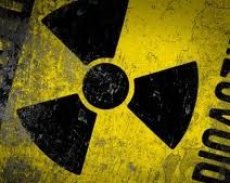New publications
IAEA: Appearance of low radiation levels in Europe still a mystery
Last reviewed: 01.07.2025

All iLive content is medically reviewed or fact checked to ensure as much factual accuracy as possible.
We have strict sourcing guidelines and only link to reputable media sites, academic research institutions and, whenever possible, medically peer reviewed studies. Note that the numbers in parentheses ([1], [2], etc.) are clickable links to these studies.
If you feel that any of our content is inaccurate, out-of-date, or otherwise questionable, please select it and press Ctrl + Enter.

Low levels of radioactive iodine-131 have been detected in several European countries over the past few weeks. The source of the radiation has not yet been found, the UN's atomic energy official said.
The International Atomic Energy Agency (IAEA) announced on Friday, November 11, that traces of radioactive iodine-131 had been found in Europe, following alarming statements from authorities in the Czech Republic.
The IAEA said the radiation levels recorded did not pose a threat to public health and that the Fukushima nuclear power plant in Japan was not the source of the radiation. The origin of the particles remains a mystery. The IAEA said it was working with all EU countries to find the source of the radiation.
"Authorities in the Czech Republic, Austria, Slovakia, Germany, Sweden, France and Poland have continued to record very low levels of iodine-131 in their atmospheres in recent days," the IAEA said in a statement.
Iodine-131 is a short-lived radioisotope with a half-life of about eight days. And the levels of iodine-131 currently detected are very low.
If a person were to inhale these levels throughout the year, they would receive an annual dose of less than 0.1 µSv. By comparison, the average annual background radiation is 2,400 µSv per year, the document says.
Iodine-131 in high doses can cause cancer by contaminating foods such as milk and vegetables.
Experts said the radiation, which spread for nearly three weeks, could have come from everything from medical laboratories, hospitals, pharmaceutical factories to nuclear submarines.
France's Radiation and Nuclear Safety Agency (IRSN) said on Thursday that the likely source of the radiation was in central or eastern Europe, specifically the Czech Republic, Poland, Hungary, Slovenia, Russia or Ukraine.
IRSN is now making calculations to track the trajectories of air masses to determine the origin of the leak. "We should have an answer by the middle of next week," said an IRSN spokesman, ruling out the hypothesis that the leak could have come from a nuclear power plant. "If the radiation had come from a reactor, we would have found other elements in the air."
